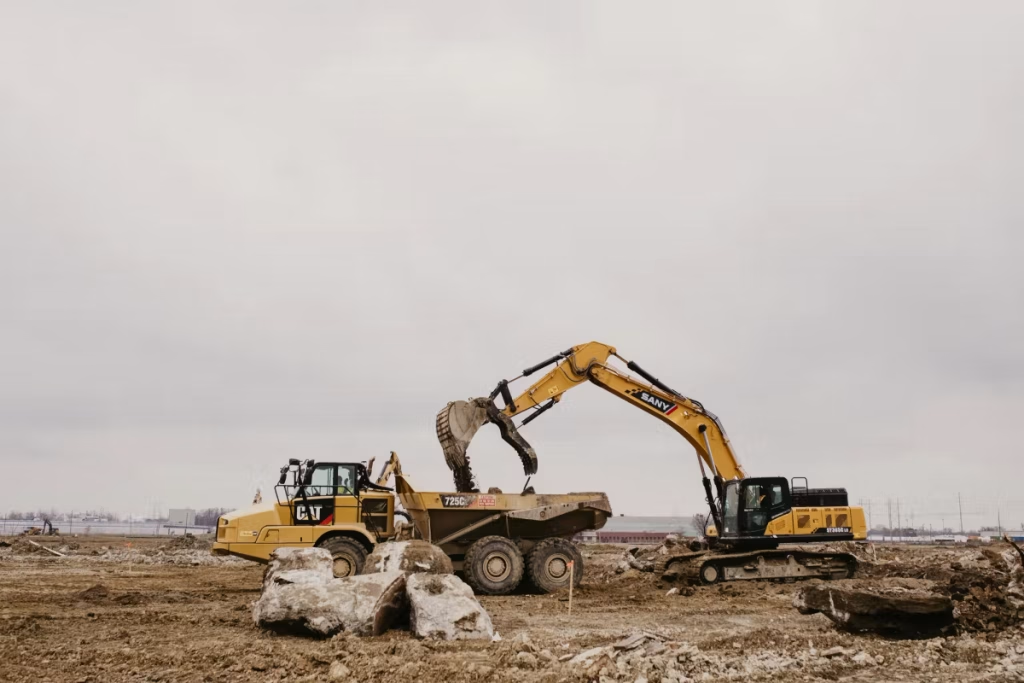You know that sinking feeling when your excavator breaks down mid-project? Your first instinct might be screaming, “Buy new parts!” But hold on. Let’s talk about why going used might be the smarter move.
When Fixing Beats Replacing Every Single Time
Here’s the truth nobody in sales wants you to hear: most heavy equipment components outlast the machines they’re attached to. That hydraulic pump failing on your 15-year-old dozer? The replacement part doesn’t need to last another 15 years. It just needs to get you through the next few seasons.
Do the math. A new excavator costs what, $200,000? But replacing that failed swing motor with a quality used part runs maybe $3,500. You just bought yourself another three years of productivity for less than 2% of replacement cost.
The rebuild option gets even better. Many used heavy equipment parts come from machines that failed for completely unrelated reasons. That transmission you need? It probably has 70% of its life left.
Where The Smart Operators Are Shopping
Forget just calling your dealer. You need to cast a wider net.
Equipment auctions aren’t just for buying whole machines. Show up early and talk to the auctioneers about parts machines. Nobody’s bidding on that machine with a cracked boom, but its engine might be perfect.
Salvage yards have gotten seriously sophisticated. The good ones index every component, test functionality, and offer actual warranties. Start building relationships with 2-3 yards in your region.
Online marketplaces have exploded. You’ve got specialized equipment part sites, but don’t sleep on general industrial auction sites either. Set up alerts for your specific models.
Here’s an unconventional move: Join online operator forums and Facebook groups for your equipment brands. Guys are constantly parting out machines, and you’ll get insider pricing before parts hit the open market.
Getting Quality Without Getting Burned
Look, buying used requires more homework than clicking “add to cart” for OEM parts. But it’s not rocket science.
Serial numbers are your best friend. Cross-reference them with manufacturer databases to verify compatibility. Seems obvious, but you’d be amazed at how many expensive mistakes happen here.
Ask for operating hours and maintenance records. Any seller worth dealing with tracks this information. No records? That’s not automatically a deal-breaker, but it should knock 20-30% off your offer.
Request photos of specific areas. Want to see bearing surfaces? Seal conditions? Just ask. Legitimate sellers will accommodate you.
Get everything pressure-tested when possible. Hydraulic components, especially. A good salvage yard has testing equipment and should demonstrate functionality.
The Unconventional Strategies Nobody Mentions
Partner with construction companies doing fleet upgrades. They’re replacing functional equipment just to modernize. Their “old” parts might have years of life left.
Buy the whole parts machine yourself. Sounds crazy, but if you operate multiple units of the same model, buying a non-running machine for $15,000 could supply you with $75,000 worth of parts over the next few years.
Consider remanufactured over used. Sometimes the price difference is minimal, but you get a warranty that actually means something.
Time your purchases strategically. Parts prices drop during economic slowdowns when equipment sits idle. Stock up on critical components when everyone else is panicking.
The Bottom Line
You’re not trying to keep that machine running forever. You’re trying to maximize return on investment. Sometimes that means spending $180,000 on a new machine. But more often? It means spending $4,000 on quality used parts and banking the difference.
Your accountant will thank you.

